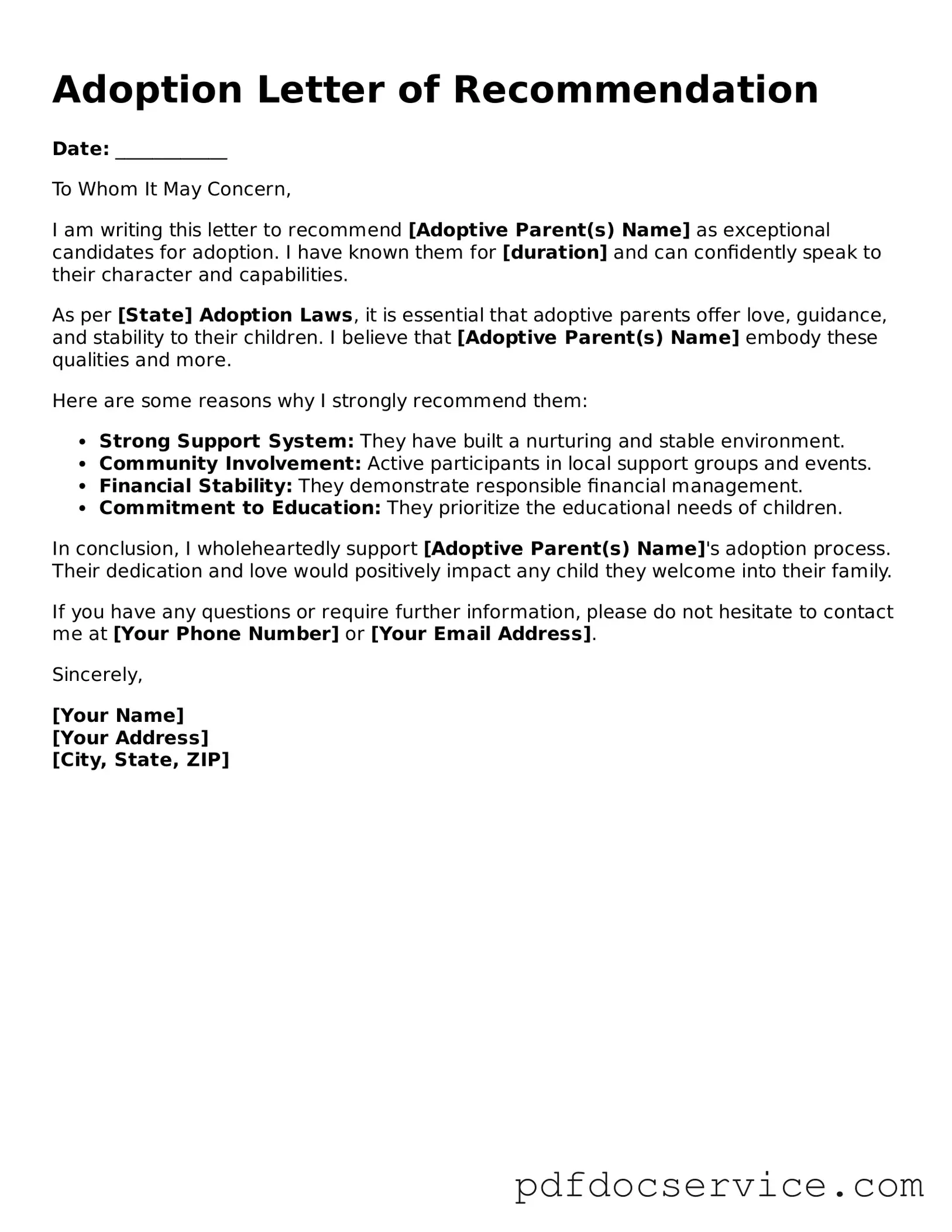The Adoption Letter of Recommendation form is a document that provides a personal endorsement for someone seeking to adopt a child. This letter typically comes from friends, family members, or colleagues who can vouch for the character and suitability of the prospective adoptive parent. It helps adoption agencies or courts assess the individual’s readiness to provide a loving and stable home.
Who should write an Adoption Letter of Recommendation?
Letters of recommendation can be written by anyone who knows the prospective adoptive parent well. This may include:
-
Friends
-
Family members
-
Co-workers
-
Neighbors
-
Community leaders
It’s important that the writer can speak to the individual’s qualities and experiences that make them a good candidate for adoption.
What should be included in the letter?
A well-crafted letter should include several key elements:
-
Introduction:
A brief introduction of the writer and their relationship to the prospective adoptive parent.
-
Personal Qualities:
Specific traits that make the individual a suitable parent, such as kindness, patience, and responsibility.
-
Experiences:
Any relevant experiences the writer has had with the prospective parent that demonstrate their parenting skills or commitment.
-
Conclusion:
A strong closing statement that reaffirms the writer’s support for the adoption.
How long should the letter be?
The letter should typically be one to two pages long. This length allows the writer to provide enough detail about their experiences and observations without overwhelming the reader. Clarity and conciseness are key.
While there is no strict format, it’s helpful to follow a standard business letter structure. This includes:
-
Your address
-
Date
-
Recipient’s address (if known)
-
Salutation
-
Body of the letter
-
Closing and signature
Using a clear and professional format can enhance the letter’s impact.
Who receives the letter of recommendation?
The letter is usually submitted to the adoption agency or court handling the adoption process. In some cases, it may also be shared with social workers involved in the evaluation of the prospective adoptive parent.
Can multiple letters be submitted?
Yes, submitting multiple letters can be beneficial. It provides a broader perspective on the individual’s character and parenting abilities. However, it’s important to ensure that each letter offers unique insights rather than repeating the same information.
Is there a deadline for submitting the letter?
Deadlines can vary depending on the specific adoption agency or court. It’s crucial to check with the relevant authorities to ensure that the letter is submitted in a timely manner as part of the overall adoption application process.
Can the letter be handwritten?
While a handwritten letter can add a personal touch, it’s generally recommended to type the letter. A typed letter is easier to read and looks more professional. If a handwritten letter is preferred, it should still be clear and legible.
